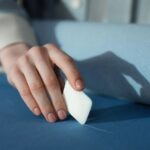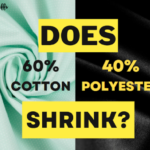Choosing the right sewing machine needle is a fundamental skill that can dramatically affect your sewing projects. A needle isn’t just a small metal tool; it is the key to achieving professional results. In this comprehensive guide, we’ll delve into the various types of needles, factors to consider when selecting one, and practical maintenance tips to keep your needles in top condition. Whether you’re a novice or a seasoned sewist, understanding needle selection will enhance your sewing experience.
Understanding Needle Types
Before diving into the specifics of needle selection, it’s crucial to understand the various types of sewing machine needles available. Each needle type serves a specific purpose and is designed for certain fabrics and sewing techniques.
1. Universal Needles
Universal needles are versatile and suitable for a wide range of fabrics, including woven and knit materials. They feature a slightly rounded tip that penetrates the fabric without causing damage. If you’re starting out or working on general sewing projects, universal needles are an excellent choice.
Recommended Product: Check out this Universal Sewing Needles Set on Amazon for a great variety.
2. Ballpoint Needles
Ballpoint needles have a rounded tip, allowing them to slide between the fibers of knit fabrics without snagging. This makes them ideal for sewing stretch fabrics like jersey and spandex. If you frequently work with knits, investing in a set of ballpoint needles is essential.
Recommended Product: You can find a reliable Ballpoint Needle Pack that’s perfect for your projects.
3. Sharp Needles
Sharp needles, often referred to as microtex needles, have a slender, sharp point that creates precise stitches in delicate fabrics such as silk and fine cotton. They are excellent for quilting, piecing, and any project that requires accuracy.
Recommended Product: For high-quality stitching, consider this Sharp Microtex Needles Pack.
4. Denim/Jeans Needles
Denim needles are specifically designed for sewing through heavy fabrics like denim, canvas, and upholstery materials. They have a thicker shaft and a strong, sharp point to penetrate multiple layers of fabric with ease.
Recommended Product: A great option for heavy fabrics is this Denim Sewing Needles.
5. Embroidery Needles
Embroidery needles feature a larger eye and a special groove to accommodate thicker embroidery threads. They are perfect for decorative stitching and machine embroidery projects, ensuring that your thread glides smoothly.
Recommended Product: Explore this Embroidery Needle Set for your decorative sewing needs.
6. Specialty Needles
There are various specialty needles available, such as twin needles for decorative stitching, wing needles for heirloom sewing, and quilting needles designed for quilting projects. Each serves a unique purpose, making it essential to choose the right type for your specific needs.
Recommended Product: Check out this Variety Pack of Specialty Needles to enhance your sewing capabilities.
Factors to Consider When Choosing a Needle
Selecting the right needle involves considering several factors. Here are the key points to keep in mind:
1. Fabric Type
The type of fabric you are working with is the most significant factor in needle selection. Different fabrics require different needle types. For instance, using a sharp needle on knit fabric can lead to skipped stitches, while using a ballpoint needle on woven fabric may not yield the desired stitch quality.
2. Thread Type
The thread you choose also influences your needle selection. For example, if you’re using thick embroidery thread, an embroidery needle with a larger eye is necessary. Similarly, lightweight threads work best with finer needles.
3. Needle Size
Needles come in various sizes, typically ranging from 60/8 (very fine) to 120/19 (very thick). The size you choose should correspond to the weight of the fabric. Lighter fabrics require smaller needles, while heavier fabrics need larger needles. Here’s a quick reference:
- Size 60/8: Lightweight fabrics (e.g., chiffon, silk)
- Size 70/10: Light to medium fabrics (e.g., cotton, taffeta)
- Size 80/12: Medium fabrics (e.g., denim, canvas)
- Size 90/14: Medium to heavy fabrics (e.g., wool, knit)
- Size 100/16: Heavy fabrics (e.g., upholstery, denim)
Recommended Product: Consider this Assorted Needle Size Pack to ensure you have the right sizes for your projects.
4. Sewing Technique
The sewing technique you plan to use can also affect your needle choice. For instance, if you are quilting, a quilting needle will help you achieve better results than a standard needle. Similarly, if you are doing decorative stitching, a specialty needle may be necessary.
5. Machine Compatibility
Always ensure that the needle you select is compatible with your sewing machine. While most domestic machines use standard needles, some specialized machines may require specific types or sizes. Consult your sewing machine manual for guidance on compatible needle types.
How to Change a Sewing Machine Needle
Changing the needle in your sewing machine is a simple task that can greatly improve your sewing experience. Follow these steps to change your needle correctly:
- Turn Off the Machine: Always turn off your sewing machine before making any adjustments to ensure safety.
- Remove the Presser Foot: Release the presser foot to gain better access to the needle.
- Loosen the Needle Clamp: Use a screwdriver (if needed) to loosen the needle clamp screw. This will allow you to remove the old needle.
- Insert the New Needle: Make sure the flat side of the needle shank is facing the back of the machine. Push the needle up into the clamp until it cannot go any further.
- Tighten the Needle Clamp: Secure the new needle by tightening the needle clamp screw.
- Reattach the Presser Foot: Place the presser foot back onto the machine.
- Test the Stitch: Before starting your project, do a test stitch on a scrap piece of fabric to ensure everything is working correctly.
Maintenance Tips for Sewing Needles
Proper maintenance can extend the life of your sewing needles and improve your sewing experience. Here are some tips:
1. Change Needles Regularly
Needles can dull or bend over time, affecting stitch quality. It’s recommended to change your needle after every project or every 8 hours of sewing.
2. Use the Right Needle for the Job
Using the correct needle for your fabric and sewing technique will reduce the risk of damage to your fabric and ensure better stitch quality.
3. Store Needles Properly
Keep your needles in a needle case or magnetic strip to prevent damage and loss. Avoid storing them in damp areas to prevent rust.
4. Keep Your Machine Clean
Regularly clean your sewing machine, including the needle area, to prevent lint buildup that can affect needle performance.
Conclusion
Choosing the right sewing machine needle is a fundamental skill every sewist should master. By understanding the different needle types, considering fabric and thread choices, and maintaining your needles properly, you can enhance your sewing projects and achieve professional results.
When you’re ready to stock up on sewing machine needles, consider browsing Amazon for a wide selection of options. Here are a few highly-rated products to get you started:
Investing in the right needles will make a significant difference in your sewing experience and the quality of your finished projects. Happy sewing!








